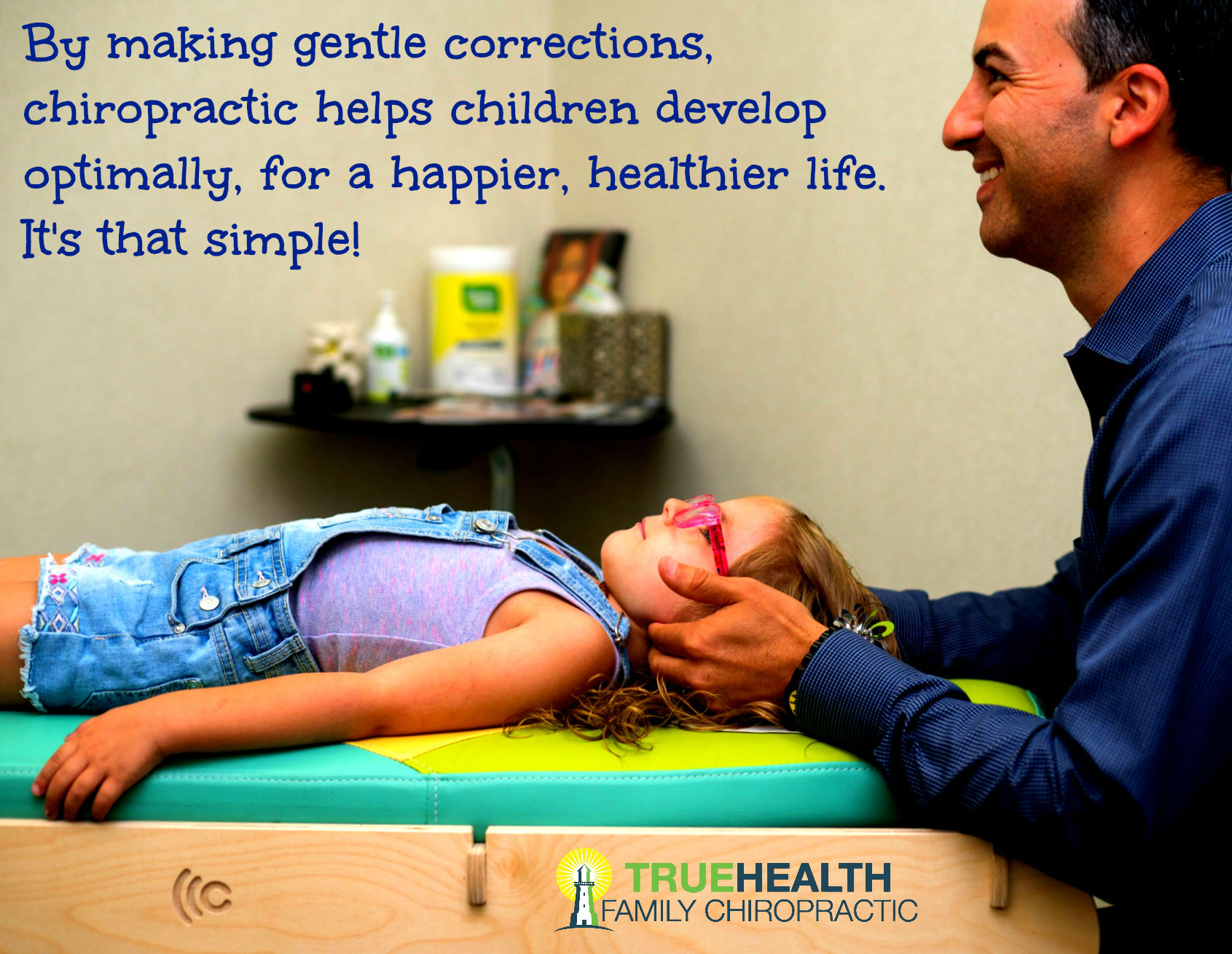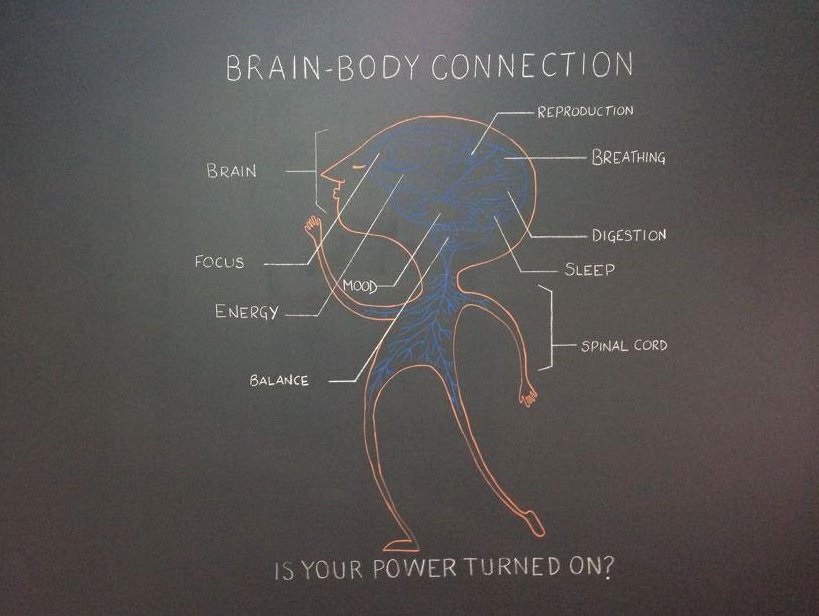In today’s world of infant carriers, sitting for hours at school, hunched forward on tablets and cell phones, television watching and driving in cars, kids are breaking down their spines faster than ever.
Postural patterns can begin in the womb, especially towards the end of pregnancy when there is less space to move. This reveals itself in the way a baby may keep their head turned, or legs crossed one way. If left uncorrected, this can turned into a stuck or locked posture. However, if we can correct these learned patterns at a young age it requires much less time and effort to make a change. When a child is only months old as opposed to years – we do not see the muscle memory and learned behaviors/postures that work against what we do in the office. This means that something that would take 3-4 months to correct on a 10 year old could potentially be corrected in 3-4 weeks on a 10 month old. Sounds better, right?
In addition, when there is strain, tension, pulling and stress placed on the child’s head and neck during the birth process, it very commonly leads to a structural shift in the spine. This will often times lead to secondary conditions (colic, constipation, difficulty feeding) that we see resolve when these misalignments are corrected in infants.
We’ve talked previously about the safety of chiropractic care (A 2011 literature review found that no serious adverse events have been reported in the scientific literature in the last 20 years) – given the research, it’s quite reasonable to conclude that modern pediatric chiropractic care is safe. But does it work?
Data from the ICPA’s ground breaking study, The Safety and Effectiveness of Pediatric Chiropractic: A Survey of Chiropractors and Parents in a Practice-Based Research Network, was recently published in the biomedical journal, Explore: The Journal of Science and Healing. The most common reasons for parents seeking symptom relief care were muscles conditions, ear, nose, and throat, respiratory and digestive disorders. Both parents and doctors indicated a high rate of improvement with respect to the children’s presenting complaints. In addition to these improvements, respondents reported better sleeping patterns, improvements in behavior and, improved immune system function while under chiropractic care.
In our office, kids who get adjusted tend to be more comfortable, have stronger immune systems, and reach developmental milestones appropriately…and they love getting adjusted.
As a reminder, those who receive advanced training and are active members of the International Chiropractic Pediatric Association (ICPA) are the most qualified to examine and care for children and pregnant patients. NOT all chiropractors adjust kids (nor should they). If you need help finding a chiropractor in your area, check http://icpa4kids.org/






